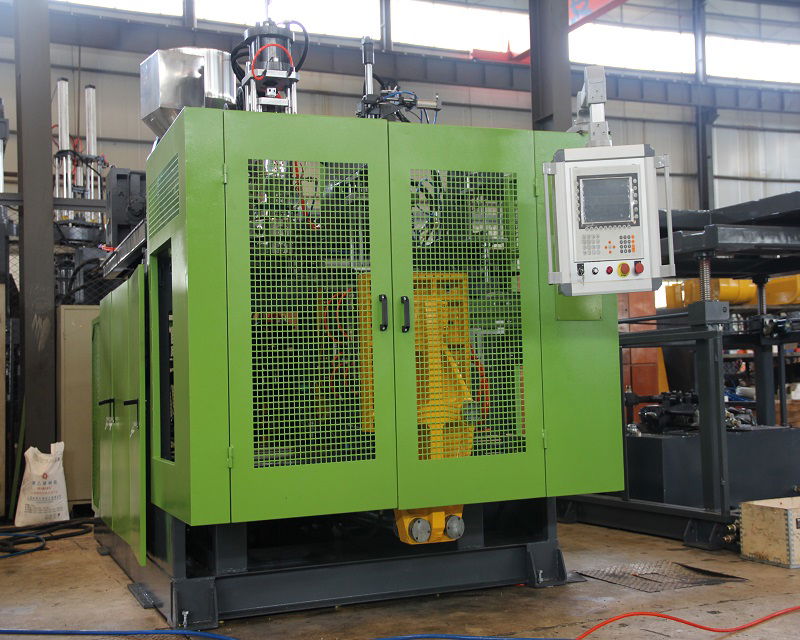China Extrusion Blow Molding Machine from Kingplas use PP Materials

PP is a typical crystalline polymer. To improve its transparency, you can consider the following seven aspects:
1. the matrix resin itself
The transparency of the matrix resin itself has a great influence on the transparency of the PP product. In order to improve the transparency of the PP, a small amount of a polyacrylate resin excellent in transparency and compatibility can be added.
2. nucleating agent
Nucleating agent: can significantly increase the crystallization rate, increase the crystallization rate and crystal fineness ratio.
(1) Inorganic nucleating agent The inorganic nucleating agent is mainly composed of ultrafine talc powder and SiO2, and also includes calcium carbonate, mica powder, inorganic pigments and fillers. The price is low and the source is rich, but the gloss and transparency of the product are certain. influences.
(2) Organic nucleating agent The organic nucleating agent is a low molecular weight organic substance with nucleation. It is represented by sorbitol and its derivatives. It has good compatibility with the matrix resin and can significantly improve the transparency of the product. And surface gloss.
(3) The amount of nucleating agent In the case of sorbitol, the transparency improvement effect is not obvious or even decreased after the nucleating agent dosage exceeds 0.3%; however, when the dosage is less than 0.2%, the nucleation quantity is insufficient and the transparency is increased. not enough. It can be seen that the amount of the nucleating agent is preferably between 0.2 and 0.3%. Therefore, a suitable nucleating agent content can better improve the transparency of PP.
3. the extrusion temperature
When the temperature is too high, the low molecular weight substances in the nucleating agent will decompose and volatilize, reduce the effective components in the nucleating agent, reduce the transparency improvement effect, and the higher temperature will destroy the original crystal nucleus in the PP, reducing the The heterogeneous nucleation center causes the modification effect to decrease; while the temperature is too low, the dispersibility of the nucleating agent is not good, and the transparency effect is poor. Therefore, choosing a suitable extrusion temperature is especially important for improving transparency.
4. toughening agent
The toughening agent is not mutually soluble due to the toughening agent and PP, and the refractive index is also different, which will refract at the mutual interface, thereby affecting the light transmittance of the article. As the toughening content increases, the area of the mutual interface is also stronger, and the light transmittance of the product is worse.
5. process parameters
The process parameters such as processing temperature, cooling temperature, and injection pressure are also very helpful for the transparency of PP.
Processing temperature: Under the processing conditions, the lower the processing temperature, the smaller the crystal size and the better the transparency;
Cooling temperature: The lower the cooling temperature, the lower the crystallinity and the better the transparency.
Injection pressure, injection time, and dwell time can affect the orientation of the molecule. The orientation affects the crystallization of the molecule, so shortening the injection and holding time and reducing the pressure without affecting the performance and appearance of the product can improve the transparency to some extent.
6. molding processing
The molding process compares the products obtained by the injection, drawing and blowing processes, and it is found that the injection and blowing processes are most beneficial for increasing transparency.
7. the mold
The higher the smoothness of the mold, the better the transparency of the product.